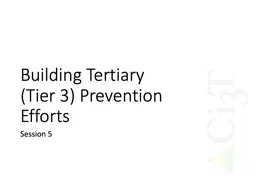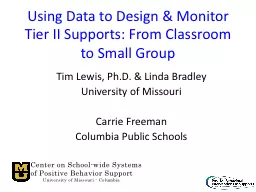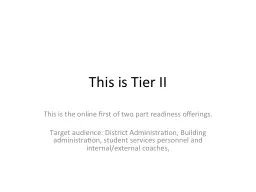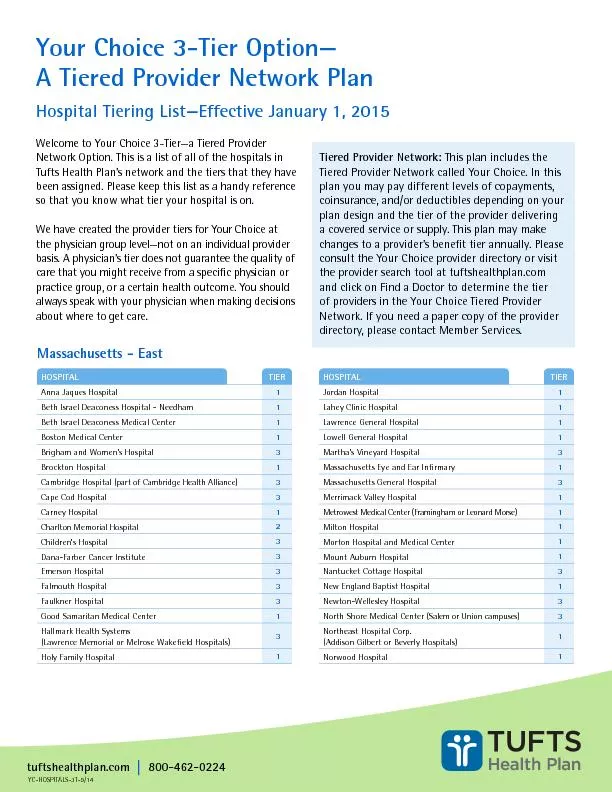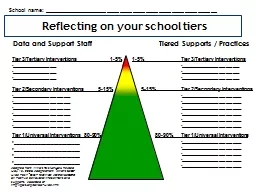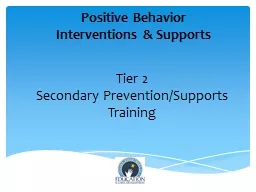PPT-Building Tertiary (Tier 3) Prevention Efforts
Author : jideborn | Published Date : 2020-08-06
Session 5 Agenda Welcome How did your faculty and staff perceive the plan Obtaining feedback on the Ci3T Blueprint A Primary Tier 1 Plan How can we use the Primary
Presentation Embed Code
Download Presentation
Download Presentation The PPT/PDF document "Building Tertiary (Tier 3) Prevention Ef..." is the property of its rightful owner. Permission is granted to download and print the materials on this website for personal, non-commercial use only, and to display it on your personal computer provided you do not modify the materials and that you retain all copyright notices contained in the materials. By downloading content from our website, you accept the terms of this agreement.
Building Tertiary (Tier 3) Prevention Efforts: Transcript
Download Rules Of Document
"Building Tertiary (Tier 3) Prevention Efforts"The content belongs to its owner. You may download and print it for personal use, without modification, and keep all copyright notices. By downloading, you agree to these terms.
Related Documents

